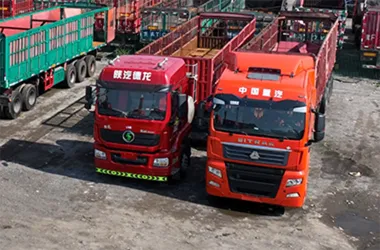weld on chassis tabs
Understanding Weld-On Chassis Tabs A Comprehensive Guide
In the world of automotive customization and fabrication, weld-on chassis tabs have emerged as essential components for builders and enthusiasts alike. These tabs are small metal pieces that can be attached to a vehicle’s chassis, providing convenient points for mounting various components such as suspension systems, bumpers, and other structural elements. Understanding the function and advantages of weld-on chassis tabs can enhance your vehicle's performance and appearance.
What Are Weld-On Chassis Tabs?
Weld-on chassis tabs are typically made from steel or aluminum and come in various shapes and sizes to accommodate different applications. They are designed to be welded directly to the vehicle's frame or chassis, creating a robust and durable connection point. The primary purpose of these tabs is to facilitate the mounting of components, ensuring they are securely attached and can withstand the forces experienced during driving.
Key Benefits of Using Weld-On Chassis Tabs
1. Strength and Durability One of the most significant advantages of weld-on chassis tabs is the strength they provide. Welding creates a solid bond between the tab and the chassis, making it less likely to fail compared to bolted connections, which can loosen over time.
2. Customization Weld-on tabs allow for a high degree of customization. Builders can position them exactly where they are needed, making them ideal for unique builds or modifications. Whether you are installing a custom rear suspension or an aftermarket bumper, the ability to place tabs precisely can make a big difference in the final result.
3. Versatility These tabs can be used for various applications within automotive design and fabrication. From mounting control arms to securing fuel tanks, the versatility of weld-on chassis tabs makes them a go-to solution for many fabrication projects.
4. Clean Aesthetic When installed correctly, weld-on chassis tabs offer a cleaner look compared to other mounting methods. There are no protruding bolts or brackets, which can improve the overall appearance of the vehicle while also reducing the number of potential snag points.
Choosing the Right Weld-On Chassis Tabs
When selecting weld-on chassis tabs for your project, several factors must be considered
weld on chassis tabs

- Material Choose the right material based on the application. Steel tabs are often stronger and more suitable for heavy-duty uses, while aluminum tabs may offer weight savings and corrosion resistance.
- Size and Shape Depending on what you are mounting, the size and shape of the tabs will vary. Ensure that the tabs you choose can handle the load and suit the design requirements of your project.
- Welding Technique Ensure you have the proper welding equipment and skills to attach the tabs. The quality of the weld can play a crucial role in the performance and longevity of the installation.
Installation Tips
1. Preparation Clean the areas where the tabs will be welded to ensure a strong bond. Remove any paint, rust, or dirt.
2. Alignment Carefully align the tabs before welding. Use clamps or fixtures to keep them in place during the welding process.
3. Welding Technique Use an appropriate welding technique and filler material for the metal type of the chassis tabs. Take care to avoid overheating, which can warp the metal.
4. Inspection After welding, inspect your work for any flaws. A good weld should be uniform and free of cracks.
Conclusion
Weld-on chassis tabs play a crucial role in automotive fabrication, offering strength, customization, and versatility. By understanding their benefits and properly installing them, you can enhance the functionality and aesthetics of your vehicle. Whether you are a seasoned builder or a DIY enthusiast, incorporating weld-on chassis tabs can significantly elevate your project to the next level.
-
SINOTRUK HOWO 84 Electric Dump Truck for Eco-Friendly Heavy HaulingNewsJul.26,2025
-
The Fast 16-Gear Manual Transmission Assembly for Heavy TrucksNewsJul.25,2025
-
Mercedes Benz Actros 1848 42 Tractor Truck for Sale - Reliable PerformanceNewsJul.24,2025
-
High-Quality Water Pump Assembly for Sinotruk Trucks – Durable & ReliableNewsJul.23,2025
-
Premium Truck Engine Antifreeze Coolant Fluid for Heavy Duty VehiclesNewsJul.22,2025
-
FOTON View G7 Mini Bus: Affordable & Spacious TransportNewsJul.22,2025
Popular products

























